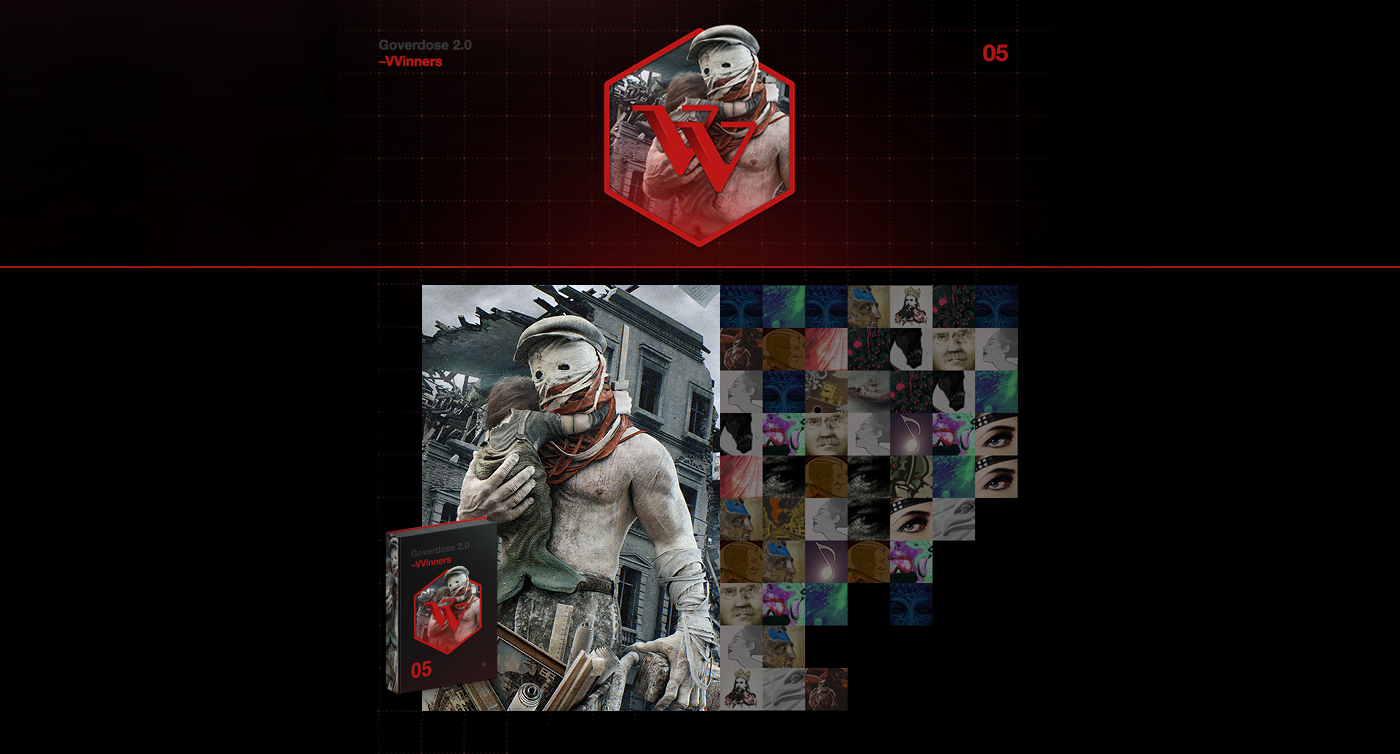
Goverdose 2.0 & Surge Polonia
VVinners / Zvvycięzcy
VVinners / Zvvycięzcy
The main idea of the VVINNERS project is the creation of the unique compilation of Polish victories, that became legendary and are inspiration for next generations of Poles. In the project we avoid touching on the martyrological topics. On the contrary, we focus on the promotion of numerous Polish victories, suggesting at the same time that they are still possible nowadays – just as they were in the past. We show Poland as a country of winners - brave and fearless people for whom freedom has always been a top priority - just like for the Spartans.
Successes of polish animations or the comics anthology about the Warsaw Uprising, clearly show that historical and patriotic topics can be successfully used in the contemporary design and they arouse a lot of interest among the audience, cultural institutions and mass media.
On the one hand the VVINNERS Project corresponds with this trend, on the other hand, however, it is in many ways unique because of its subject matter (focusing not on defeats but on victories) and its authors - Goverdose collective, which is a group of the most talented Polish designers representing different graphic styles with the cooperation with Surge Polonia - first patriotic clothing brand in the world.

The New Goverdose is a collective of graphic designers representing different graphic styles and techniques united among one idea. The VVINNERS project is for a us a good change from our agency chores, where we need to keep to the briefs and introduce hundreds of, sometimes contradictory, changes. Our own identity is often lost. In Goverdose there is no brief, there is no ideology, there are no clients’ remarks. With each issue, we would like to introduce to the graphic design stage something new and fresh, we would like to develop and act as a surprise, having a lot of fun as well.

Surge Polonia is the first patriotic apparel brand in the world, combining patriotic motives with best contemporary design. The brand has been created by a group of friends fascinated with the Polish history, who decided to popularize its most fascinating episodes among a broad audience, presenting them in a modern way. Our aim and ambition is to create a wide-known clothing brand associated with high quality and patriotic message. We want to promote the idea of modern patriotism and to prove that patriotism can be not only interesting but also inspiring.

..
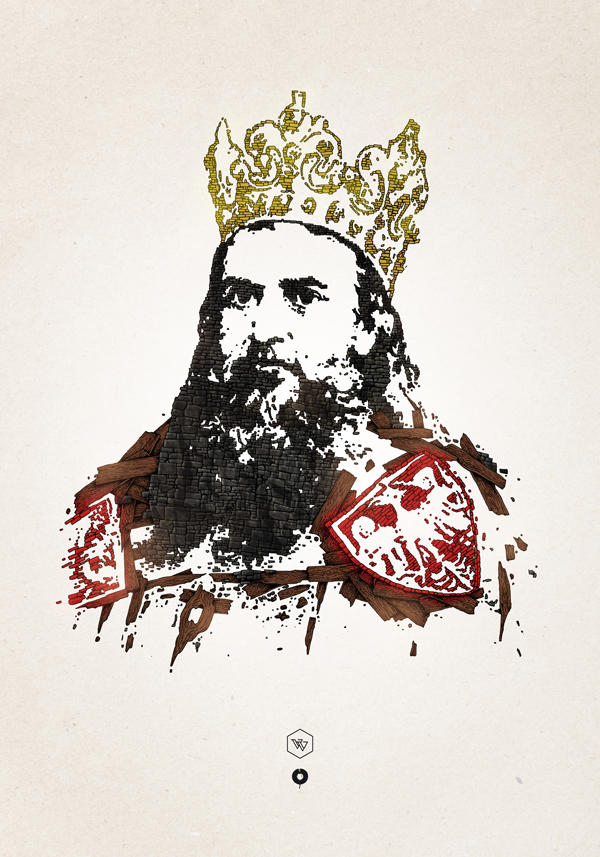
Kazimierz Wielki / Omash One
Kazimierz Wielki was the last King of Poland coming from the Piast dynasty, the son of King Wladyslaw Łokietek (Władyslaw I the Elbow) and Duchess Jadwiga (Hedwig of Kalisz), the daughter of Boleslaw Pobożny (Bolesław the Pious). Kazmierz Wielki reigned between 1333 and 1370. He gained the title "Great" thanks to his political, military and organizational skillfulness. He is known as a great reformer of the state and life of its inhabitants. He was carrying out successful changes in the area of administration, finance, military and legislation. He also organized the colonization on an unprecedented scale.
Kazimierz Wielki was the last King of Poland coming from the Piast dynasty, the son of King Wladyslaw Łokietek (Władyslaw I the Elbow) and Duchess Jadwiga (Hedwig of Kalisz), the daughter of Boleslaw Pobożny (Bolesław the Pious). Kazmierz Wielki reigned between 1333 and 1370. He gained the title "Great" thanks to his political, military and organizational skillfulness. He is known as a great reformer of the state and life of its inhabitants. He was carrying out successful changes in the area of administration, finance, military and legislation. He also organized the colonization on an unprecedented scale.
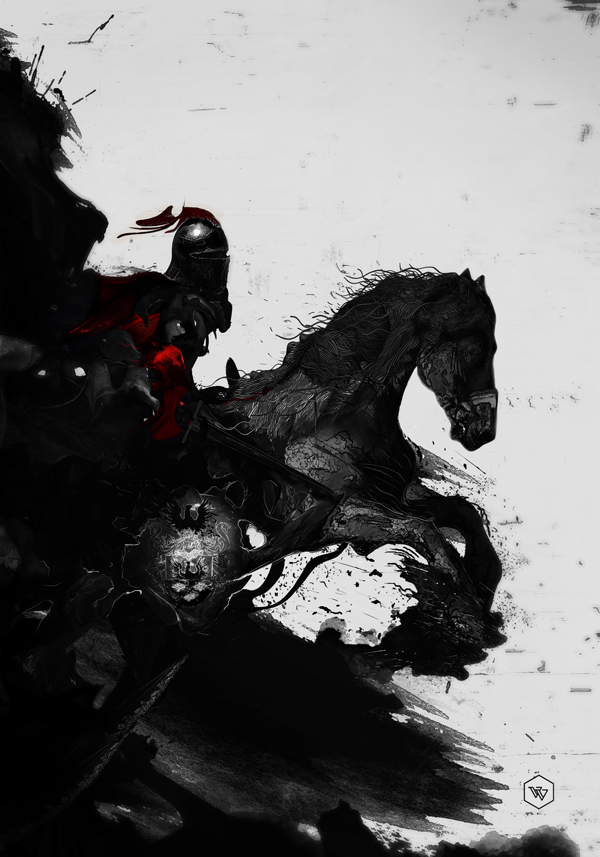
Zawisza Czarny is the most famous and titled knight in the history of Poland. He became a legend in a very short time. He was renowned for winning multiple tournaments, he took part in the Battle of Grunwald and was present at the Council of Constance. He defeated the well-known Spanish knight John of Aragon. His nickname is due to his black hair and probable dark complexion. Till nowadays there is a Polish proverbial saying: „Rely on someone like on Zawisza”.
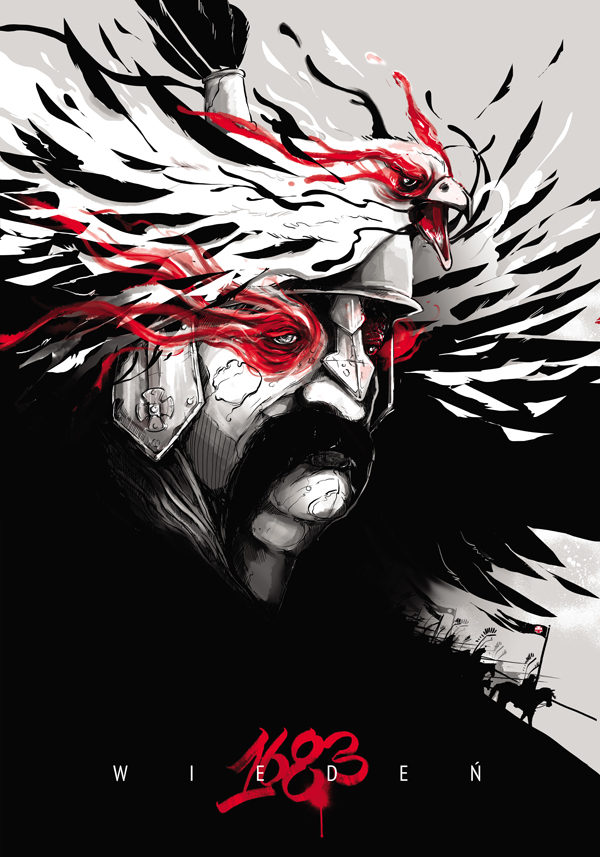
Battle of Vienna – 1683 / Maciej Jerzy Przężak
The Battle of Vienna is one the greatest Polish victories in history. It is at the same time one of the biggest battles in the world history, where two cultures of the time clashed: Western (Christian) and Eastern (Muslim). The Republic of Poland was at that time a respected and an influential country. It had the best cavalry in the world called husaria, that terrified the enemies. In the Battle of Vienna there were almost four thousand "Winged Hussars”. At some point, the troops from different countries stopped fighting, surprised by the view of hussars charging at full speed in massed numbers.
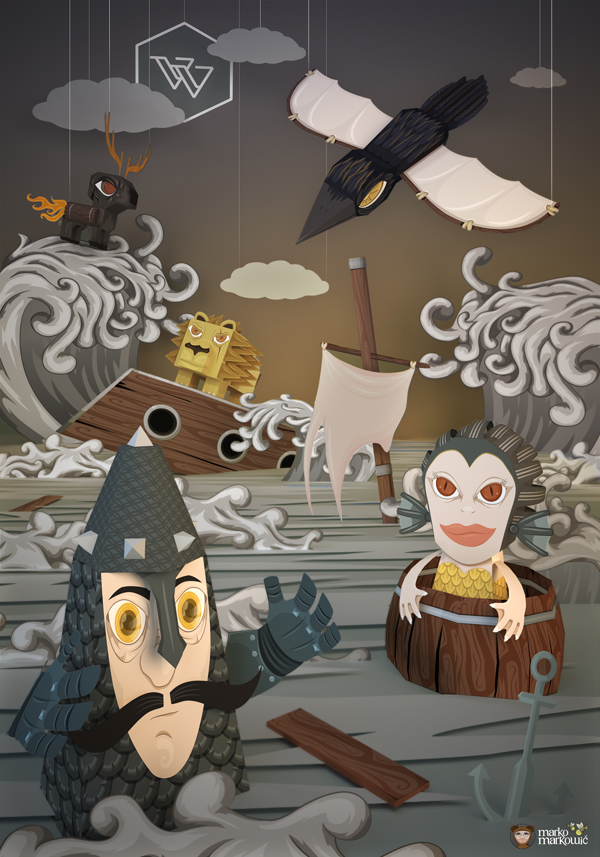
Battle of Oliva – 1627 / Marko Markowicz
The Battle of Oliva took place on November 28th, 1627 slightly north of the port of Gdańsk (Danzig) near the village of Oliwa (Oliva). It was the first and the biggest naval battle of a young, newly formed Polish fleet. The Polish ships were more numerous. The Swedes however were more experienced and had a much longer tradition of seamanship. The battle didn’t have any particular military significance. However, it was very important from the moral and propaganda perspective. It was proved that it was possible to beat the Swedes. As a result of the Polish victory, the Swedes temporarily unblocked the seaport in Gdańsk.
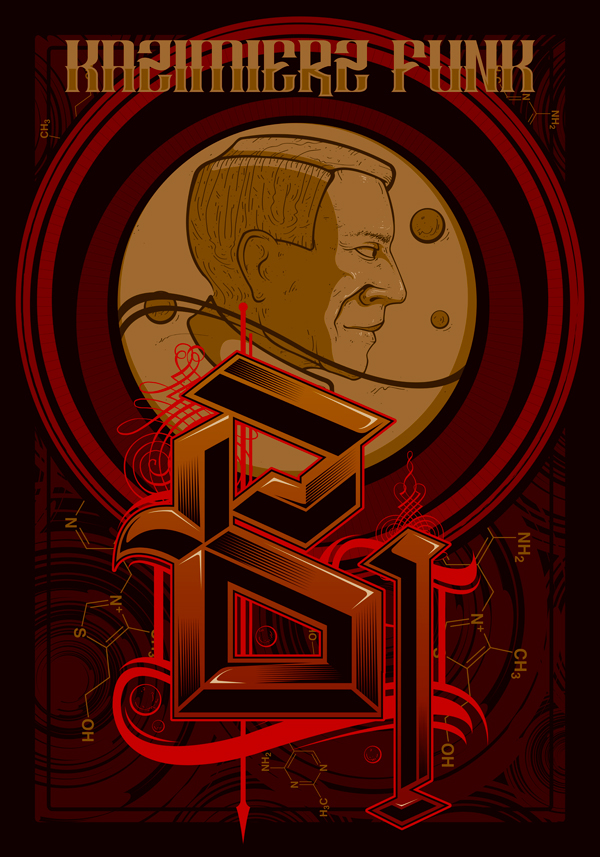
Kazimierz Funk / Dmitry Vtorushyn
A famous biologist and chemist. He worked at Pasteur Institute in Paris (were he conducted the majority of his research works), at Berlin University and at Lister Institute in London. His greatest success was the discovery of vitamins. He was trying to isolate, at that time unknown, substance present in brown rice. He succeeded in 1912. Because the substance contained an amine group, he called it vitamin.
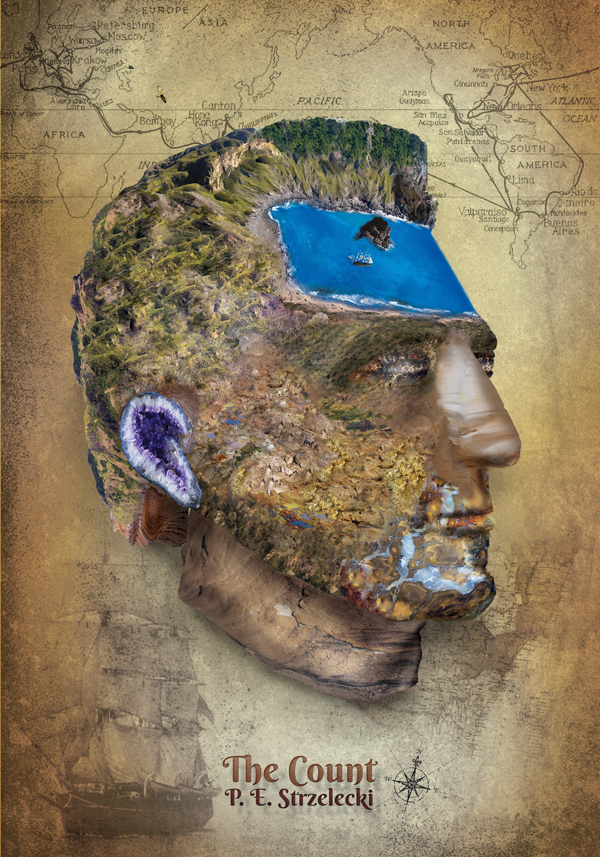
Paweł Edmund Strzelecki / Jakub Polek
„Strzelecki is the most famous of all Poles, who contributed something to the history of Australia. He achieved fame and an enormous respect not only on the Antipodes but also in Great Britain, Ireland, in the United States and Canada" – this is what Roland Sussex, an Australian scientist told about Strzelecki. Edmund Strzelecki was the Polish geographer, geologist and explorer. Since 1853 he was a member of the Royal Geographical Society in London. His most important discoveries were those ones in Australia. He set out and expedition into the Australian Alps and discovered the Snowy Mountains, he measured the height of the highest peak in Australia and named it Mount Kosciuszko.
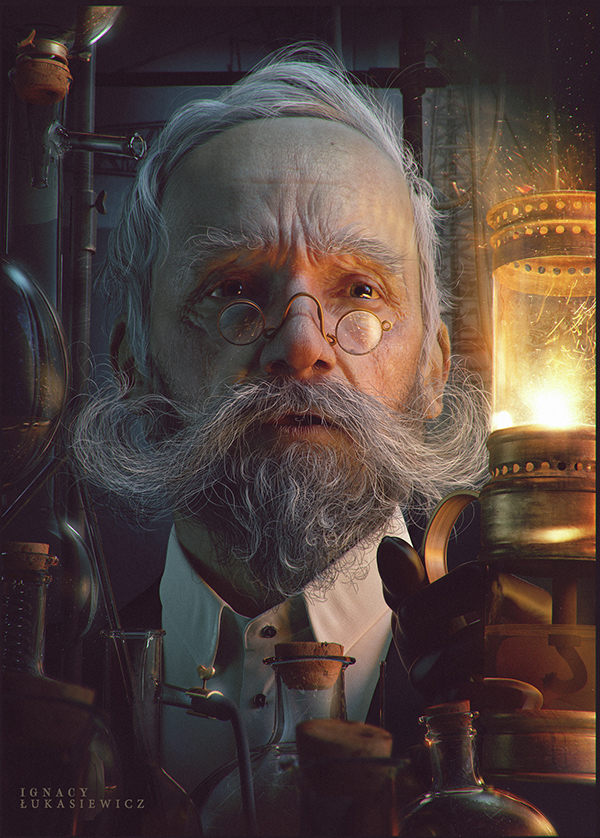
Ignacy Łukasiewicz / Paweł Rębisz
(1822–1882) was a Polish pharmacist and petroleum industry pioneer of Armenian origin, who in 1856 built the first oil refinery in the world. Among his other achievements were the discovery of how to distill kerosene from seep oil, the invention of the modern kerosene lamp (1853), the introduction of the first modern street lamp in Europe (1853), and the construction of the first world modern oil well (1854).
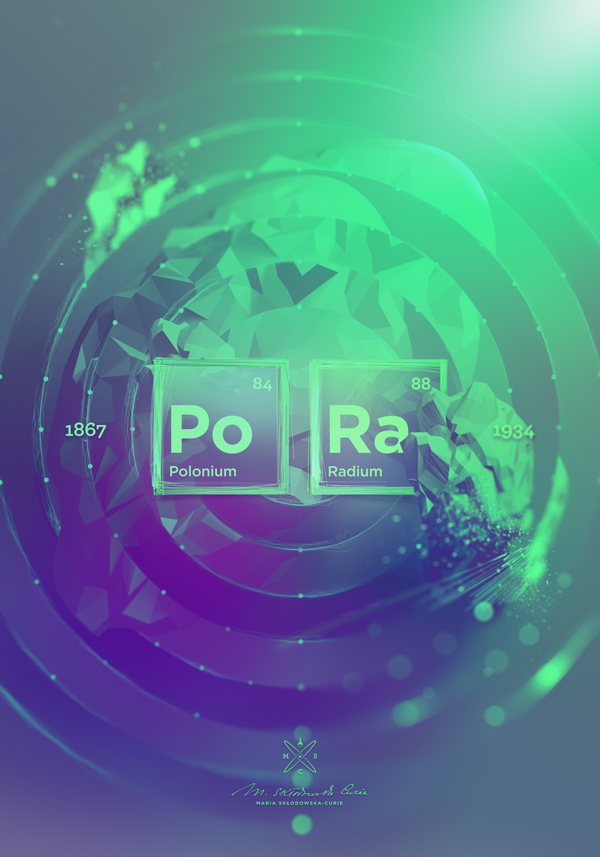
Maria Curie Skłodowska / Adam Hudyma
A physicist, chemist, the first woman to win a Nobel Price and the only woman to win in two fields. She proved that, despite common beliefs of that time, women have the some rights to education and to win laurels. She is also the symbol of sacrifice – as a result of her research on radioactivity she suffered from cancer and eventually died.
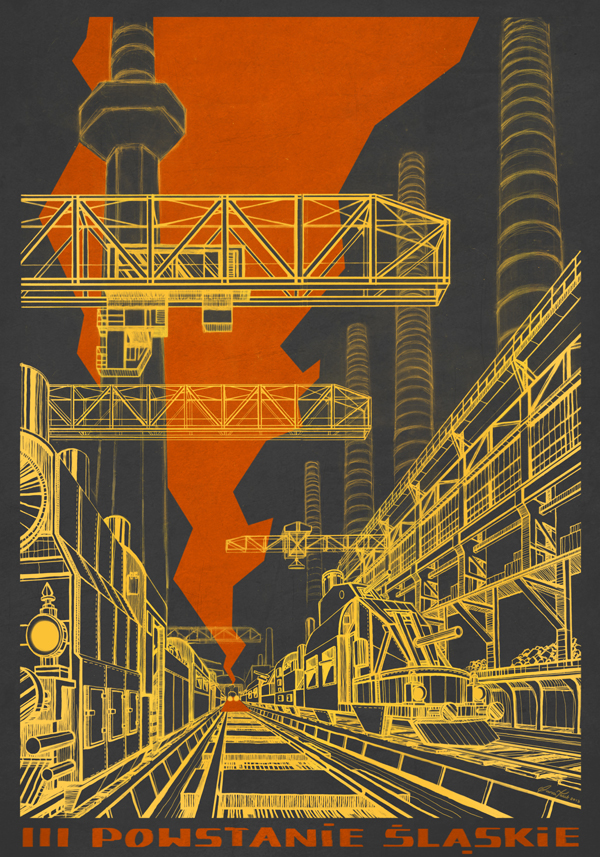
Third Silesian Uprising – 1921 / Anna Taut
The Third Silesian Uprising is, just like The Great Poland Uprising, another example of a successful Polish burst. The goal of the Silesian Uprisings was to join the Upper Silesia to the Second Polish Republic. The uprisings were very fierce because the region was one of the most industrialized and richest in the whole Europe. The truce in 1921 ended the Third Silesian Uprising. In 1922 the Lower Silesia was incorporated into Poland.

Regaining Independence – 1918 / Mateusz Terczewski
The "outburst" of independence in November 1918 was a surprise for many people. The victory however was being prepared for many years. A person who won the most was certainly Piłsudski – initially the leader of the Polish Socialist Party. His main political opponent was Roman Dmowski – the leader of the Polish National Democracy. Ignacy Paderewski, a great artist, the ambassador of Poland abroad, was another person who contributed to regaining the independence. Due to the advantageous international factors, Poles could take matters into their own hands. Despite numerous animosities against each other, the Polish leaders and their camps had one goal - independence. Just the means they used were different...
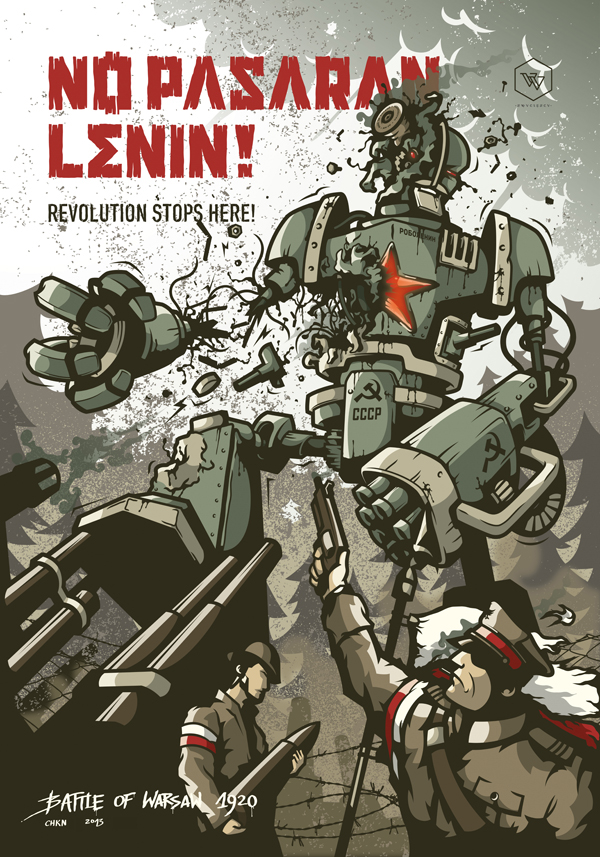
Battle of Warsaw – 1920 / Krzysztof Nowak
The greatest Polish victory of XX century and an enormous success of the reborn Republic of Poland. The victory over Bolsheviks finally saved Polish independence. According to a British diplomat, Lord D’Abernon the Battle of Warsaw in 1920 was the eighteenth decisive battle of the world that changed the course of history. "Had Piłsudski failed to arrest the triumphant advance of the Soviet Army at the Battle of Warsaw, not only would Christianity have experienced a dangerous reverse, but the very existence of western civilization would have been imperiled". The victory of Poland saved Europe and its culture from Bolsheviks.

The Reconstruction of Warsaw / STRZYG
Warsaw – the capital city of Poland, Phoenix city. Warsaw was by far the most destroyed European city in World War II. Hitler decided to burn and blow-up the city in the act of revenge for the Warsaw Uprising. Neglected during 40 years of Communism, today Warsaw, like the proverbial Phoenix, is rising from the ashes, after almost half a century from the destruction. Contemporary Warsaw is the symbol of a generation change, ambition,persistence and the perseverance of Poles against adversities. Warsaw is the synonym of success and the development of new Poland.

Gdynia, Central Industrial District / Aleksandra Marchocka
The Second Polish Republic was a big economic success. Uniting three, destructed during World War I regions, which differed from each other starting with the width of rails ending up with the mentality of people, turned out to be a real challenge. The challenge was accepted and turned into success. Within 20 years the economic basics were created and the future development plans were established. The symbols of this great progress were built from scratch - Gdynia and the Central Industrial District.
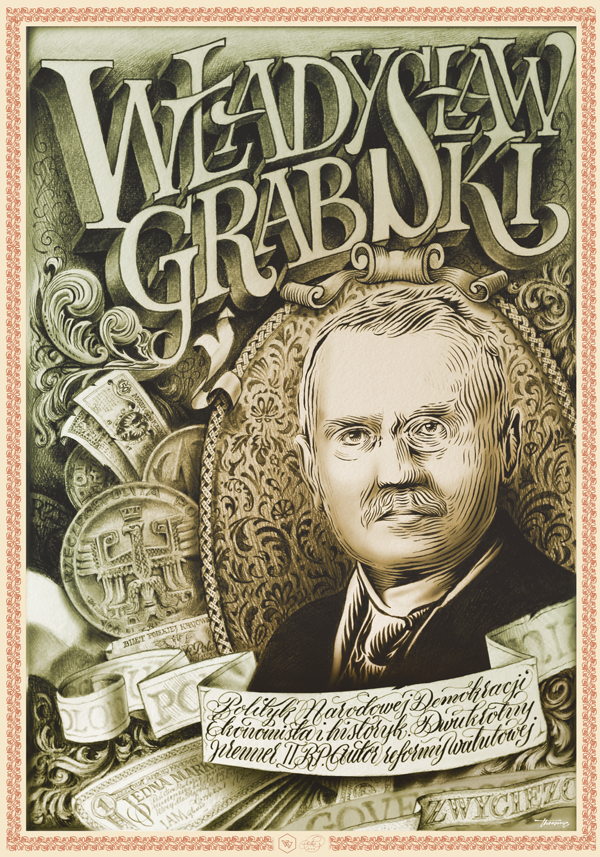
Władysław Grabski / Adam Romuald Kłodecki
He was a person about whom one can say with certainty: an expert, a statesman, a dedicated politician. Władysław Grabski is mainly known as the author of the currency reform in the Second Polish Republic. The reform was carried out without any external financial support and turned out to be a great success of the government and Grabski himself. As a result of the reform, the economic situation of Poland became stable and a significant development of the country in the twenties and thirties of the XX century was possible. Till 1939 the rate of Polish zloty was stable and the Polish currency was fully exchangeable.
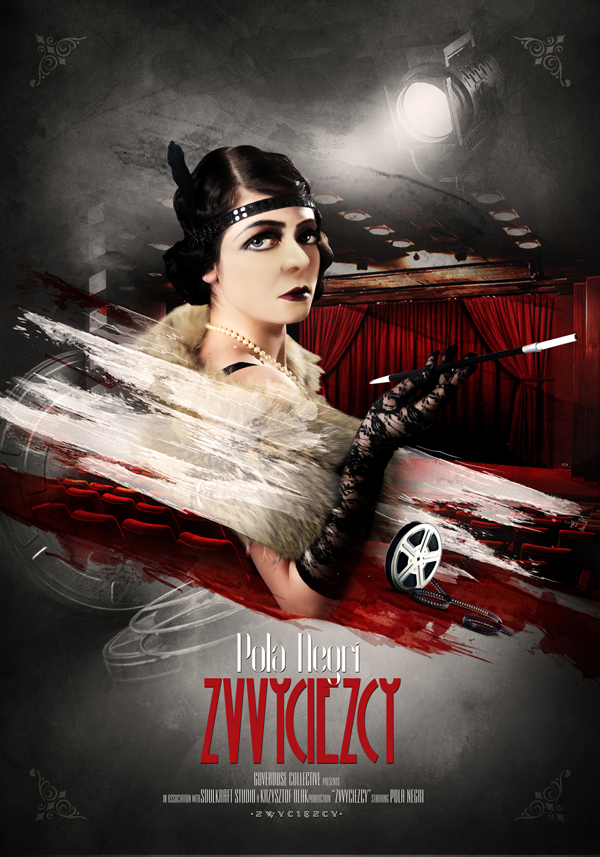
The only Polish actress who achieved worldwide stage fame. At the age of 25 Pola Negri moved to the States. In the twenties she starred in the majority of films. This was the time when she became the goddess of the silver screen. Her personality and her lifestyle were for many women an example to be followed. She was the first one to paint the nails, wear sandals and high-heels ankle boots.
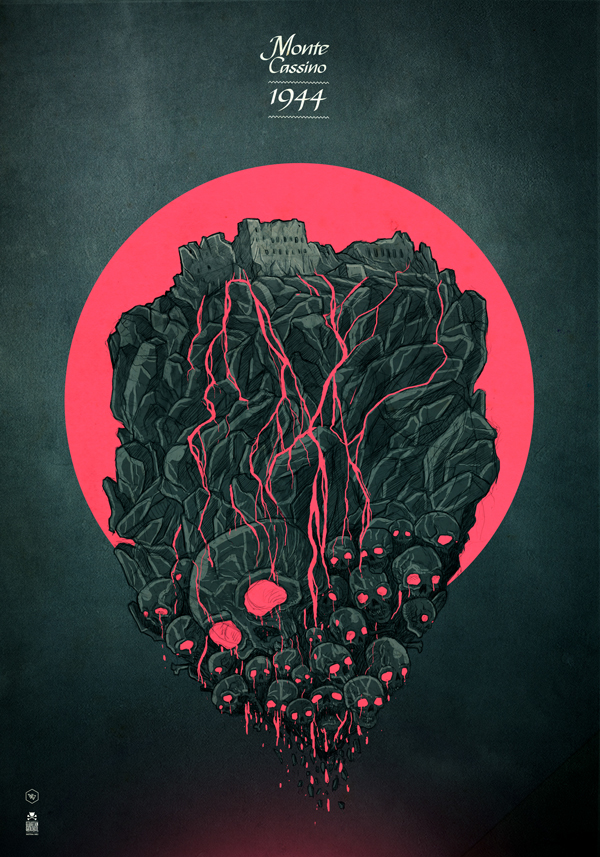
Monte Cassino – 1944 / Sebastian Skrobol
On March 24th, 1944 general Władysław Anders, the commander of the Polish II Corps was called to the staff of general Sir Oliver Leese, the commander of the Eighth British Army. Once general Leese made a short introduction about the "damn mountain", about the hell that took a heavy toll, he turned to general Anders and said: "I decided to entrust Polish II Corps with the conquest of the monastery and the monastic hills. I am fully aware what a difficult and important task it is. If you decide not to undertake the challenge, I would be forced to give it to another corps. The Polish Corps will be used in another place. If you could be so kind and go with the Chief of the Staff to the room next door to confer with him. Please inform me about your decision within next 10 minutes.” Anders accepted the challenge. On May 19th, 1944 the Polish flag flattered on the ruins of the monastery, ending one of the fiercest battles in the World War II history.
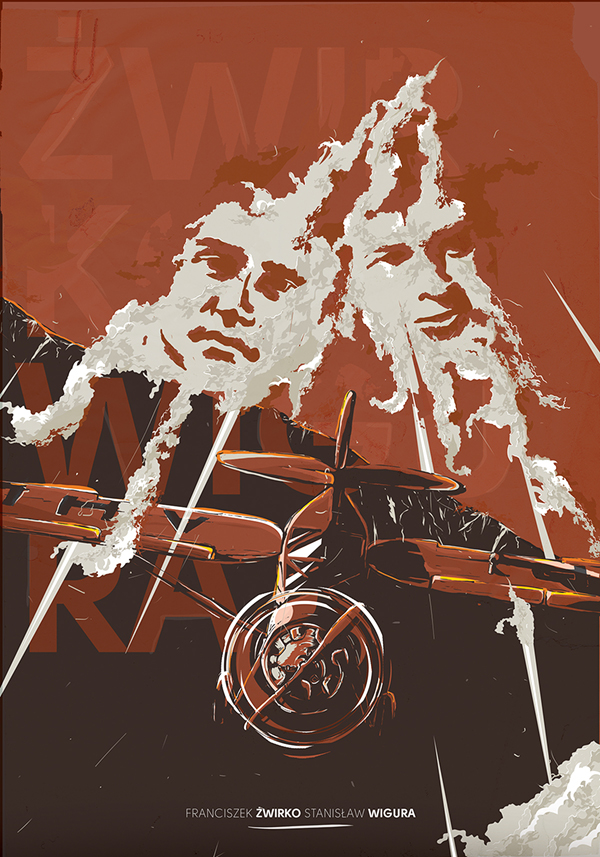
Żwirko i Wigura / Łukasz Wrona
Stanisław Wigura was a Polish aircraft designer and aviator, co-founder of the RWD aircraft construction team and lecturer at the Warsaw University of Technology. Franciszek Żwirko was a prominent Polish sport and military aviator. Along with Stanisław Wigura, he won the international air contest Challenge 1932.
Stanisław Wigura was a Polish aircraft designer and aviator, co-founder of the RWD aircraft construction team and lecturer at the Warsaw University of Technology. Franciszek Żwirko was a prominent Polish sport and military aviator. Along with Stanisław Wigura, he won the international air contest Challenge 1932.

“Banach was my greatest scientific discovery" - this is how professor Hugo Steinhaus summarized his scientific achievements. In 1916, in Krakow's Planty gardens, he happened to overhear the conversation between two young men. They were talking about very complicated mathematical dilemmas. One of them was Banach, who later became one of founders of modern functional analysis and one of the original members of the Lwow School of Mathematics. The meetings of Lwow mathematicians (including Banach) at the café “Scottish” became legendary. They used to sit there for hours, solving the most complicated mathematical problems. Some of the sessions lasted up to 17 hours…

Breaking the Enigma code – 1938 / Tomasz Guz
Breaking the code of a German encrypting machine called “Enigma” was a breakthrough in the history of World War II. It is estimated that breaking the code shortened the war for about 2-3 years. The Enigma code was broken by three Polish cryptologists: Rajewski, Zygalski and Różycki. It was without doubt a Polish victory that played an enormous role in defeating the Third Reich. The information about breaking the Engima code was kept in secret till the seventies of the XX century.

“I was playing with Kaz for two years at indoor games and I have to admit that he was the best football player I ever had a chance to play with. What is more, I consider him to be one of the best football players ever. Deyne could do amazing tricks with a ball. I learnt a lot from him, because Kaz was always eager to help younger players. I got on very well with him, he spoke English well, he loved San Diego, the weather, our teammates. However, I always knew that his heart was in Poland. When he died, I was in a shock. Sometimes I was crying when I thought about him. A great man passed away. Meeting him changed my life. It is an honor for me that I had a chance to play with Kaz” – these are the memories of Jacques Ladoucer – Deyna’s teammate.
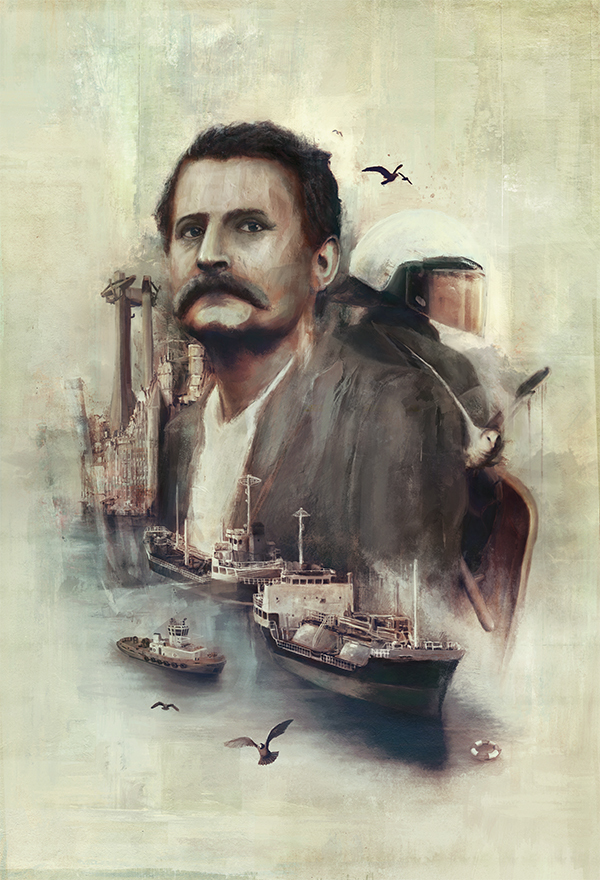
Solidarność 1980-1989 / Wojciech Pijecki
“Solidarność” was a grassroots social movement. Without doubts, it had a lot of impact on the abandonment of the Communist rule. Poles united among “Solidarność” were like a breath of freedom for nations behind the “Iron Curtain”. At the culminating point, “Solidarność” reached about 10 million members. Thanks to "Solidarność" Poland regained its independence and the Soviet Union was dissolved.

Jan A.P. Kaczmarek / Przemek Nawrocki
Jan A.P. Kaczmarek is, next to Janusz Kaminski, another Polish artist who gained recognition in Hollywood. He is an eminent composer. He gradually evolved in the direction of a film score composer, expending his music horizons and composing new scores for such films as: “Total Eclipse”, “Bliss”, “Washington Square”, „Aimée & Jaguar”, “The Third Miracle”, “Lost Souls” or “Quo Vadis”. He succeeded in evoking emotions among the audience by illustrating in a unique way the spiritual experiences of the film characters. One of the most recent works written by Kaczmarek is the score for “Unfaithful”, which is already considered as one of greatest soundtracks composed recently.
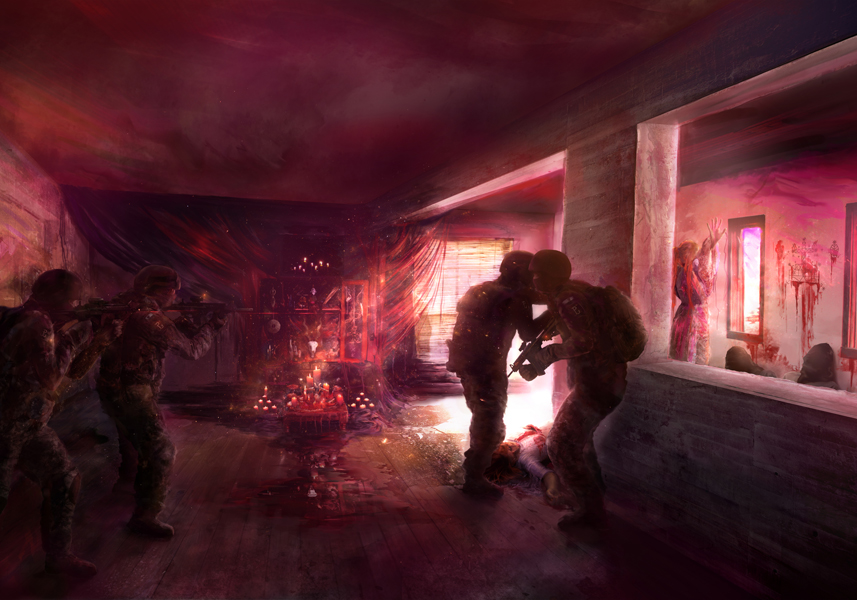
Jednostka Wojskowa GROM im. Cichociemnych Spadochroniarzy Armii Krajowej; the acronym itself means "thunder") is one of five special forces units of the Polish Armed Forces. It was officially activated on July 13, 1990.It is deployed in a variety of special operations and unconventional warfare roles, including anti-terrorist actions and projection of power behind enemy lines. One of the best military special forces units in the world.
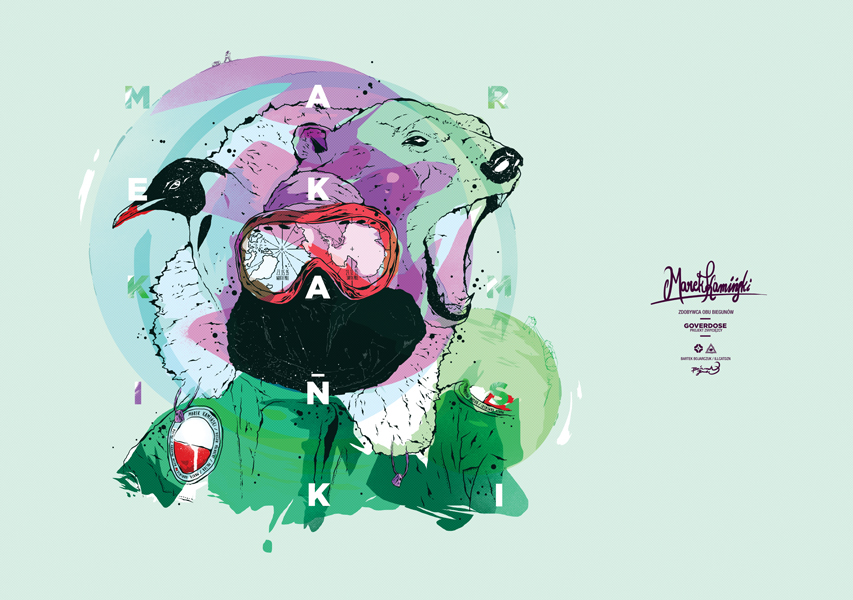
Marek Kamiński / Bartek Bojarczuk
„There is something beautiful and clean in climbing and in living at a camp during an expedition. One can see things that are really important for a man" – these are the words of Marek Kamiński, a famous Polish traveller. He was the first person ever who, in 1995, walked to both the North Pole and the South Pole in one year. The list of Kaminski’s expeditions is very long. He share his experience in numerous books. He is also successful in business - he owns a company. He was awarded many times, also for promoting Poland abroad.

At the exhibition presenting the results of the VVINNERS project you will find the works of art showing great Polish successes and victories as well as eminent people from our history. The assumption of the project was that each author chose a style most suitable for him/her - from poster style to 3D modeling. You can evaluate the results yourself. The leitmotif of all displayed works are Polish victories. The diversity of graphic styles that were used by the authors enriches the exhibition and makes it remarkably exceptional against other projects.


